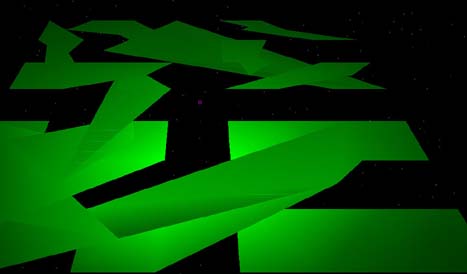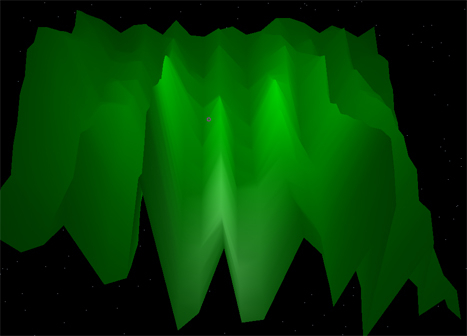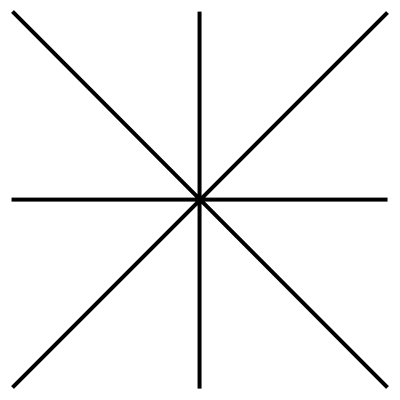//old version of mountain
void mountain(GLfloat height, GLfloat x, GLfloat y, int level, GLfloat dx, GLfloat dy)
{
level--;
if(level>0)
{
mountain(height/2., x+dx, y+dy, level, dx/2., dy/2.);
mountain(height/2., x-dx, y+dy, level, dx/2., dy/2.);
mountain(height/2., x-dx, y-dy, level, dx/2., dy/2.);
mountain(height/2., x+dx, y-dy, level, dx/2., dy/2.);
}
GLfloat newheight = height + (rand()%2 ? -1. : 1.) * height/2.;
landpt[ptptr].x = x;
landpt[ptptr].y = y;
landpt[ptptr].z = newheight;
ptptr++;
maxptr = (ptptr > maxptr ? ptptr : maxptr);
return;
}
//old code snippet from landgen for plotting the above version of mountain
//just look at how complicated this code is, and it still doesn't work properly
for(int i=arraySize-1; i>0; i--)
{
if(i%5==0) glBegin(GL_TRIANGLE_FAN);
glVertex3f(landpt[i].x,landpt[i].z,landpt[i].y);
if(i%5==1)
{
glVertex3f(landpt[i+3].x,landpt[i+3].z,landpt[i+3].y);
glEnd();
if(i>1 && (landpt[i].y > landpt[i-2].y) && (landpt[i].x > landpt[i-2].x) )
{
glBegin(GL_QUADS);
glVertex3f(landpt[i+1].x,landpt[i+1].z,landpt[i+1].y);
glVertex3f(landpt[i+2].x,landpt[i+2].z,landpt[i+2].y);
glVertex3f(landpt[i-2].x,landpt[i-2].z,landpt[i-2].y);
glVertex3f(landpt[i-5].x,landpt[i-5].z,landpt[i-5].y);
glEnd();
}
else if(i>1 && (landpt[i].y > landpt[i-2].y) && (landpt[i].x < landpt[i-2].x) )
{
glBegin(GL_QUADS);
glVertex3f(landpt[i].x,landpt[i].z,landpt[i].y);
glVertex3f(landpt[i+3].x,landpt[i+3].z,landpt[i+3].y);
glVertex3f(landpt[i-3].x,landpt[i-3].z,landpt[i-3].y);
glVertex3f(landpt[i-4].x,landpt[i-4].z,landpt[i-4].y);
glEnd();
}
}
} |
After removing the "rake effect" from my code, I next attempted a recursive algorithm for generating the terrain.
Unfortunately, I went about the algorithm in a way that made trying to plot the generated points virtually impossible, as you can see in the image below.
The code to the left is my first recursive algorithm, which generates the mess below.

Please note that this terrain appears flat intentionally - I made every height 0 so that I could see what was happening easier
|




